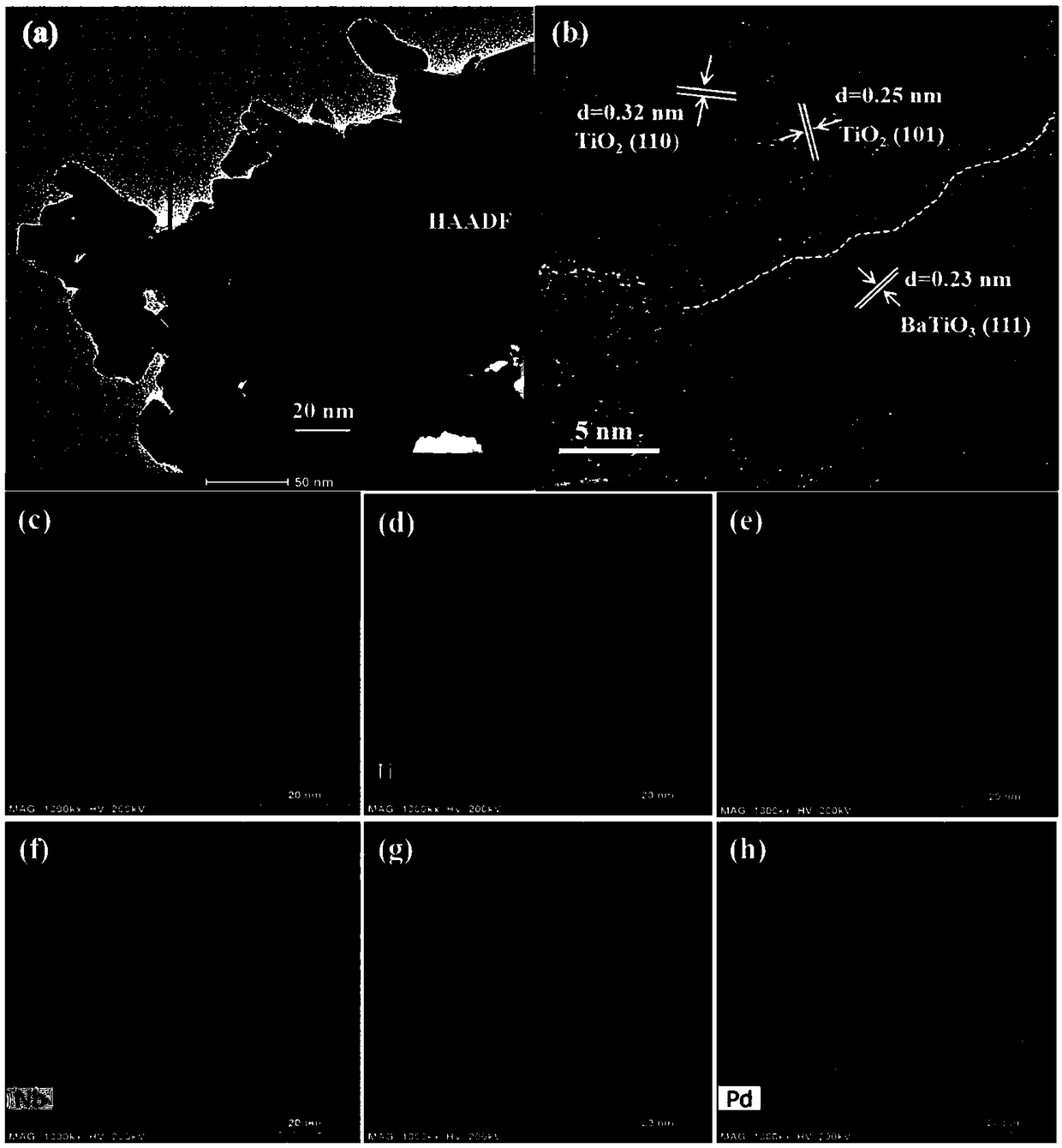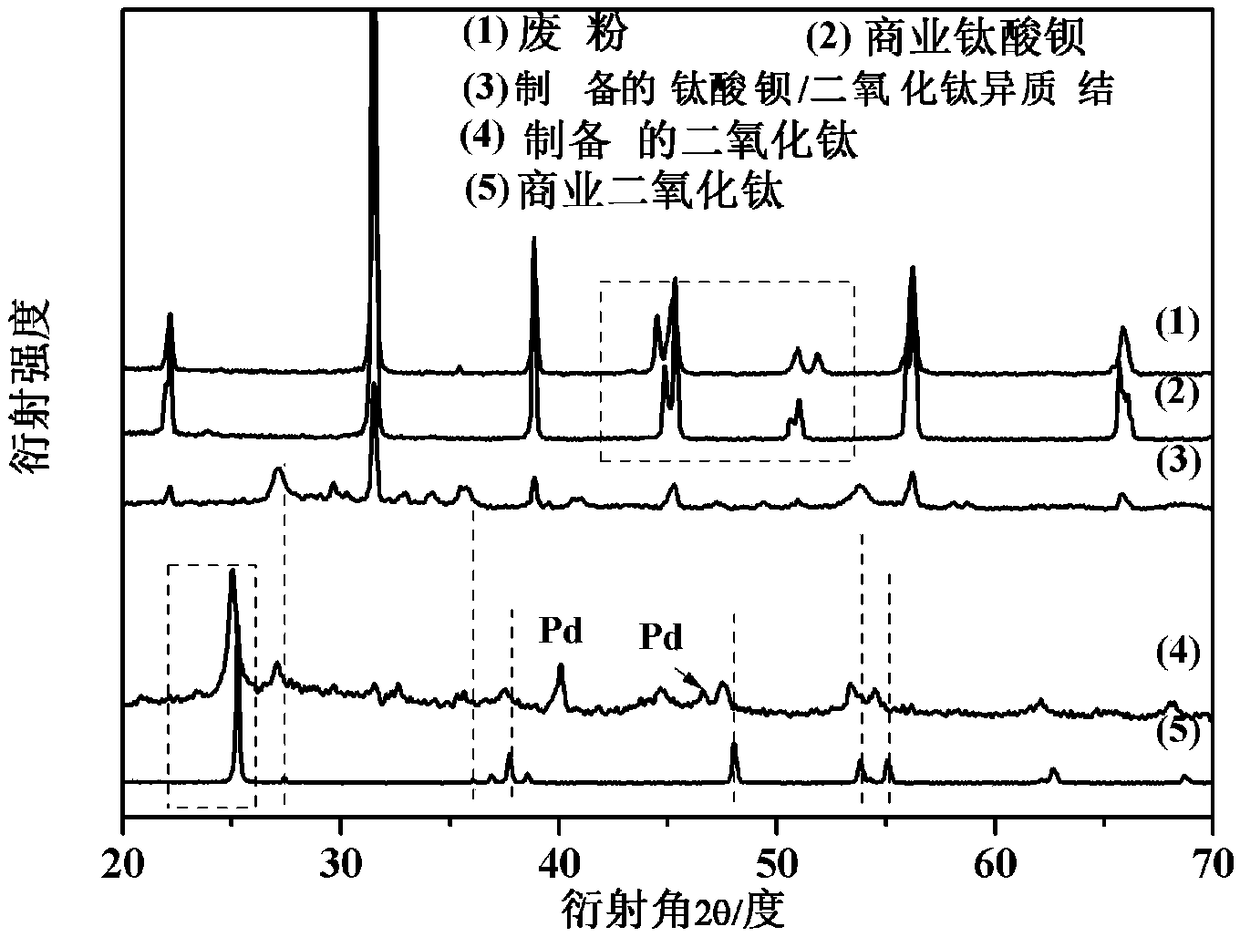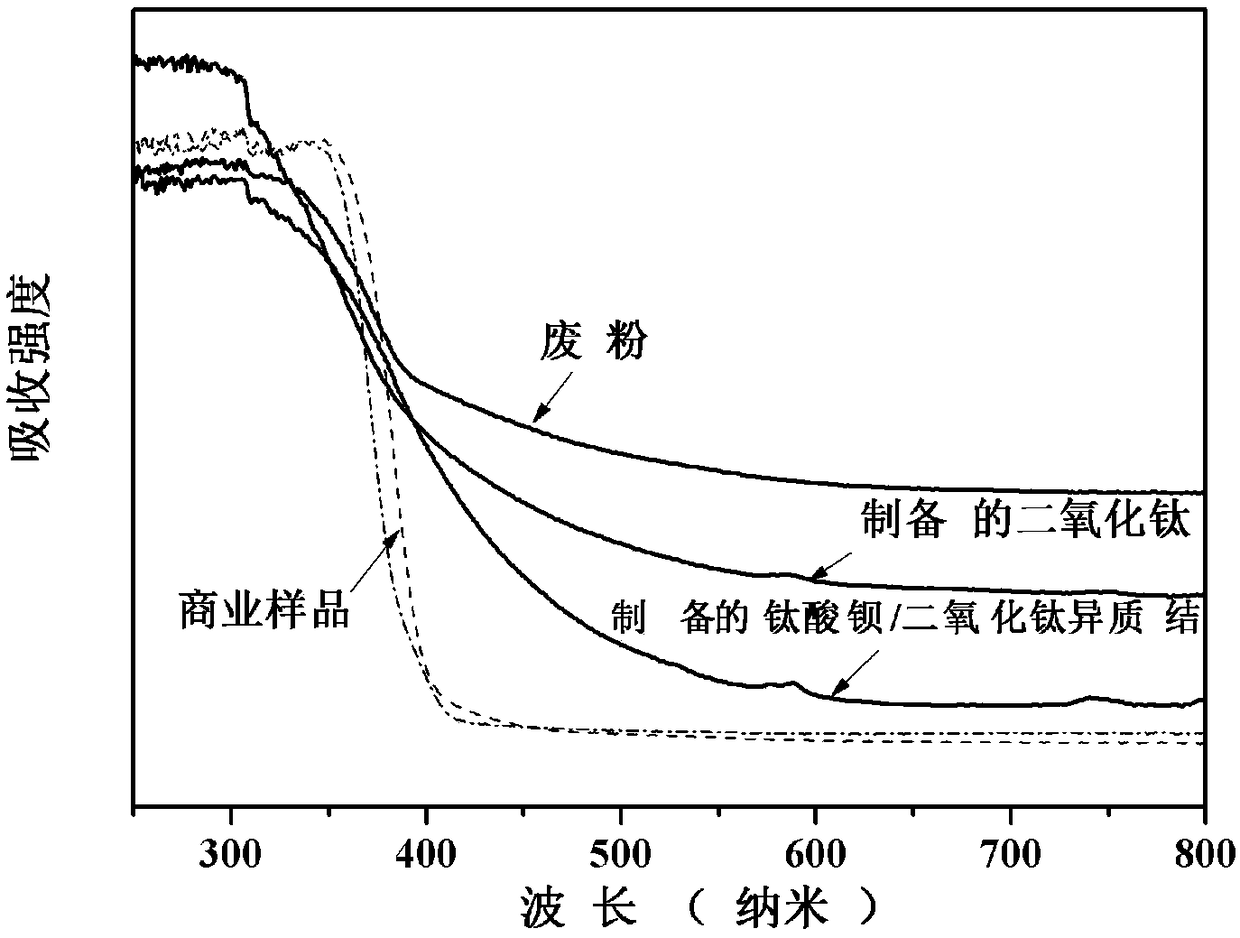Niobium and lead codoped palladium-loaded titanium dioxide/barium titanate nano heterojunction photocatalyst preparation method
A technology of titanium dioxide and photocatalyst, which is applied in the field of lead co-doping, can solve the problems of environmental pollution of waste acid and waste liquid, and achieve the effect of realizing reuse, realizing environmental protection and simple operation
- Summary
- Abstract
- Description
- Claims
- Application Information
AI Technical Summary
Problems solved by technology
Method used
Image
Examples
Embodiment 1
[0024] The method for in-situ preparation of niobium-lead co-doped and palladium-loaded titanium dioxide / barium titanate nano-heterojunction photocatalyst by using waste multilayer ceramic capacitors according to the present invention comprises the following steps:
[0025] 1. Mechanical ball milling and screening of waste multilayer ceramic capacitors, the average particle size of the material is ~0.075mm, and then magnetic separation to separate nickel and iron;
[0026] 2. Evenly mix the powder after magnetic separation with sodium chloride at a mass ratio of 1:1, and then carry out chlorination treatment. The oxygen flow rate was controlled to 50ml / min, the reaction temperature was 400°C, and the reaction time was 4h.
[0027] 3. Filter the residue after the chlorination reaction through deionized water and sodium thiosulfate to separate barium chloride and silver chloride;
[0028] 4. Dry the filtered residue at 120° C. to obtain a niobium-lead co-doped titanium dioxide / ...
Embodiment 2
[0030] The method for in-situ preparation of niobium-lead co-doped and palladium-loaded titanium dioxide / barium titanate nano-heterojunction photocatalysts described in the application of the present invention comprises the following steps:
[0031] 1. Mechanical ball milling and screening of waste multilayer ceramic capacitors, the average particle size of the material is ~0.075mm, and then magnetic separation to separate nickel and iron;
[0032] 2. Evenly mix the powder after magnetic separation with ammonium chloride at a mass ratio of 1:2, and then carry out chlorination treatment. The oxygen flow rate is controlled to 80ml / min, the reaction temperature is 500°C, and the reaction time is 2h.
[0033] 3. Filter the residue after the chlorination reaction through deionized water and sodium thiosulfate to separate barium chloride and silver chloride;
[0034] 4. Dry the filtered residue at 120° C. to obtain a niobium-lead co-doped titanium dioxide / barium titanate nano-heter...
Embodiment 3
[0036] The method for in-situ preparation of niobium-lead co-doped and palladium-loaded titanium dioxide / barium titanate nano-heterojunction photocatalysts described in the application of the present invention comprises the following steps:
[0037] 1. Mechanical ball milling and screening of waste multilayer ceramic capacitors, the average particle size of the material is ~0.075mm, and then magnetic separation to separate nickel and iron;
[0038] 2. Evenly mix the powder after magnetic separation with ferrous chloride at a mass ratio of 1:3, and then carry out chlorination treatment. The oxygen flow rate is controlled to 100ml / min, the reaction temperature is 600°C, and the reaction time is 0.5h.
[0039] 3. Filter the residue after the chlorination reaction through deionized water and sodium thiosulfate to separate barium chloride and silver chloride;
[0040] 4. Dry the filtered residue at 120° C. to obtain a niobium-lead co-doped titania catalyst with a particle size of ...
PUM
 Login to View More
Login to View More Abstract
Description
Claims
Application Information
 Login to View More
Login to View More - R&D Engineer
- R&D Manager
- IP Professional
- Industry Leading Data Capabilities
- Powerful AI technology
- Patent DNA Extraction
Browse by: Latest US Patents, China's latest patents, Technical Efficacy Thesaurus, Application Domain, Technology Topic, Popular Technical Reports.
© 2024 PatSnap. All rights reserved.Legal|Privacy policy|Modern Slavery Act Transparency Statement|Sitemap|About US| Contact US: help@patsnap.com










